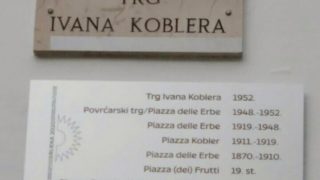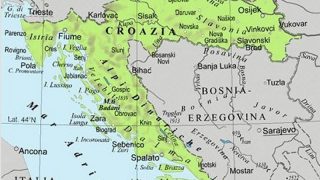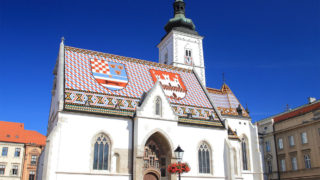Dalmatians do Trieste
Scritto da Erla Zwingle
As I understand it, Dalmatia no longer exists as an entity under that name (though the dogs haven’t had to change their passports to read “Croatian”). But there are still many Italian-speaking people in the world who refer to themselves as “Dalmati” (DAL-mah-tee.) The reason for this is pretty complex, but I’ll give you the basic outline here.
Venice dominated most of the eastern coast of the Adriatic for about eight centuries. After the fall of the Venetian Republic in 1797, Dalmatia was subject to a succession of landlords, and by December, 1944, all of what had been termed Dalmatia ever since it was a Roman province was under the control of Tito. The struggle between Tito’s Communist/Slavic partisans and the Italians living in an area carved out as the Governate of Dalmatia, combined with the actions of the Italian army in the region, led to a program of reprisals by the Communists against the Dalmatian-Italians which was indistinguishable from ethnic cleansing. Most of the Italians who survived, fled by any conceivable means — some 350,000 of them — many to Italy, but not only.
(Let me note that the Dalmatian identity still exists for some ethnic Croats as a way of distinguishing themselves from other Croats for several reasons, and also because they have a distinct cultural identity that is the result of the Italian contact as opposed to the Austro-Hungarian contact in the northeast.)
And so a group was formed, the Association of the Dalmatians in the World, under the flag of Dalmatia, language, and unfathomable store of historic culture and personal memories. (This is one of some 30 Dalmatian heritage/cultural/ political groups in Italy alone). This group has a huge reunion every year, and this year it was held at Trieste from September 14-20, AND, the faithful gondolone of our rowing club, the Canottieri Diadora, was invited to participate in the festivities. So off we all went to Trieste for a beautiful weekend which involved listening to speeches, a concert (did you know that Franz von Suppe’ was Dalmatian? Remember that the next time you hear “The Light Cavalry Overture”), eating, drinking, some walking around, and about a half-hour of rowing. It was great.
Were we invited because we — by which I mean mainly the “San Marco,” our 8-oar gondola — are so amazingly beautiful? But naturally, mon capitaine. But our beauty in the eyes of the Dalmati consisted primarily in the fact that we were already linked with them in history and in name.
Our club, the Circolo Canottieri Diadora, was founded in 1898 in Zara (now Zadar, Croatia), and after the appalling events alluded to above the club essentially disappeared. But a number of “exiles,” as they sometimes term themselves, decided to re-establish the club in 1962 on the Lido in Venice. (One of our more senior members was born in Fiume, now Rijeka, Croatia.)
Trivia du jour: One of our honorary members is fashion designer Ottavio Missoni, born in Dubrovnik. True fact.
So at 11:30 on Sunday morning, we rowed in a stately way across the Bacino of San Giusto on the waterfront of Trieste, heading toward the waterfront where a crowd had gathered and a band was playing famous Triestine songs, such as “The Bell of San Giusto.”
Seated in the bow of the gondolone was Franco Luxardo, president of the association and also “Mayor of Zara in Exile,” and Carlo Zohar, one of the men who re-established the Diadora in 1962.
When we reached the embankment, we performed the traditional oar-raising salute, the alzaremi, and they went ashore. Our two guests of honor were beside themselves; in fact, many people were deeply moved. We had been billed as the “gondolone from Zara,” but that was a bit of poetic license — actually, it would have been excellent to have arrived by sea, rowing from Zara. It wouldn’t have been that much of a big deal — it’s 205 kilometers, and we can make around 9 km/h, so that would be….22 hours. I think we should have done it.
Fonte: ‹http://iamnotmakingthisup.net›, 26/09/09.










